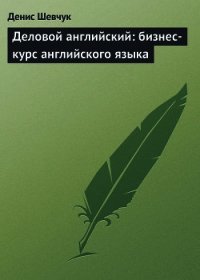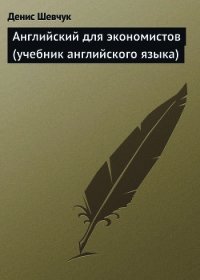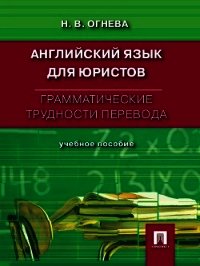Английский язык: самоучитель - Шевчук Денис Александрович (лучшие книги онлайн txt) 📗
10. Which is the best cinema in your town? How can I get to it?
Language focus 2
Road signs
Дорожные знаки

8. Match the sentences to the road signs.
Соотнесите предложения с дорожными знаками по их описанию.
1. It means you have to stop or give way.
2. It means you can’t park here.
3. It means you can’t move fast.
4. It means you can’t drive into this street.
5. It means you have to turn right.
6. It means there’s a school ahead.
7. It means you can’t overtake on this piece of road.
8. It means you have to give way to pedestrians.
9. Say what you have to do if you see these signs.
Укажите, что вы должны сделать, если увидите следующие знаки (Вы – водитель).
1. Bend ahead.
2. School ahead.
3. No overtaking.
4. Traffic lights.
5. No parking.
6. Reduce speed.
7. End of motorway.
8. T-junction.
9. Petrol station.
10. Pedestrian crossing.
10. Complete the sentences.
Дополнитепредложения.
1. It means you can’t .................the road. You have to wait.
2. It means you have to stop or.................way.
3. It means you have to.................right.
4. It means you can’t...................your car here.
5. It means you have to...............speed.
6. It means you have to................slowly.
7. There is..............light ahead.
8. You can’t.................on this piece of road.
9. There is a ..................crossing ahead.
10. If you see a sign «No................», it means you can’t drive there.
FOCUS ON GRAMMAR
Активная грамматика
Language focus 1
Modal verbs
Модальные глаголы
Модальные глаголы в английском языке используются очень часто. Модальными они называются потому, что у них имеются не все формы, какие есть у обычных глаголов. Необходимо запомнить имеющиеся у них формы и способы их употребления
1. can – мочь, уметь
Форма прошедшего времени – could/couldn’t
Будущей формы у этого модального глагола нет. Используется конструкция – will/won’t be able to.

2. must – должен
mustn’t – нельзя (запрет)
Нет ни формы прошедшего, ни формы будущего времени. Используется конструкция had to/will have to. В настоящем времени может использоваться конструкция have to/has to со значением «вынужден». Отрицание don’t have to/doesn’t have to – нет необходимости, не нужно (сравните с mustn’t).

3. may– можно, выражение разрешения
Существует только форма настоящего времени
You may turn left here.
May I come in?
You may not put it on.
4. should/ought to – следует (Синонимы, но ought употребляется всегда с «to» и преимущественно в утвердительных предложениях, в то время как should – во всех.)
Существует только форма настоящего времени.
You should give way.
You shouldn’t overtake on this piece of road.
Should I cook it now?
He ought to stop at the traffic lights.
5. be to – должен по плану, по договоренности
Существуют формы прошедшего was to/were to и настоящего времени is to/are to/am to. Чаще всего употребляется в утвердительной форме.

1. Translate the sentences.
Переведите предложения.
1. Pedestrians mustn’t cross the road here.
2. You should follow my advice.
3. The learners are to take a test on Tuesday.
4. We will have to hire two new workers.
5. You mustn’t allow your children to speak to you like that.
6. Did he have to fill in this form?
7. We were to buy two agricultural vehicles last Saturday.
8. I won’t be able to deal with these people.
9. I will have to move faster.
10. May I park on the yellow line?
2. Complete the sentences.
Дополните предложения.

3. Match the sentences.
Найдите соответствующий перевод.

4. Write the missing sentences with must and can.
Впишите недостающие предложения, используя модальные глаголы must и can.

5. Change the sentences according to the pattern.
Измените предложения, используя образец.
Example: It will be necessary for you to follow my advice.
You will have to follow my advice.

6. Extend the statements using different modal verbs.
Продолжите утверждения, используя различные модальные глаголы.
Example: Fred is going to the theatre.
He will have to put on a white shirt.
He shouldn’t be late.
He is to meet his girl-friend at seven at the theatre.

7. Translate the sentences into English.
Переведите предложения на английский язык.

8. Fill in the table. Make up sentences to illustrate the following grammar. Use the words given.
Заполните таблицу. Составьте предложения, используя предложенные грамматические структуры. Используйте данные слова.

READINGAND SPEAKING PRACTICE
1. Answer the questions.
Ответьте на вопросы.
1. What does the sign no entry mean?
2. When must we give way to other vehicles?
3. On which pieces of road is there no overtaking?
4. What do drivers have to do at the T-junction?
5. Where and when do drivers have to reduce speed?
6. If the brakes don’t work what must the driver do at once?
7. Why is it difficult to park a car in the centre of a city?
8. Do you have to deal with numerous people from numerous walks of life?
9. What do police cater for?
10. Why do we sometimes have to rent a car?
11. What is the most important thing for a learner driver?
2. Agree or disagree. Use different expressions.
Выразите согласие или несогласие. Используйте различные речевые образцы.
1. There are too many cars in the city streets now.
2. The job of a policeman is boring.
3. Police don’t allow agricultural vehicles to drive in city streets.
4. On average every family in Russia has a car.
5. The police cater for all the people they have to deal with.
6. Pedal cyclists can’t ride along the streets of Moscow.
7. People of numerous walks of life use city transport.
3. Speak about some of the places in your town. Say where they are, how you can drive there, what signs you can see on the way there.
Расскажите о некоторых местах в своем городе. Скажите, где они находятся, как можно проехать туда на машине, какие дорожные знаки встречаются на пути.
...
...
4. Make up short stories using the words from the Active Vocabulary.




